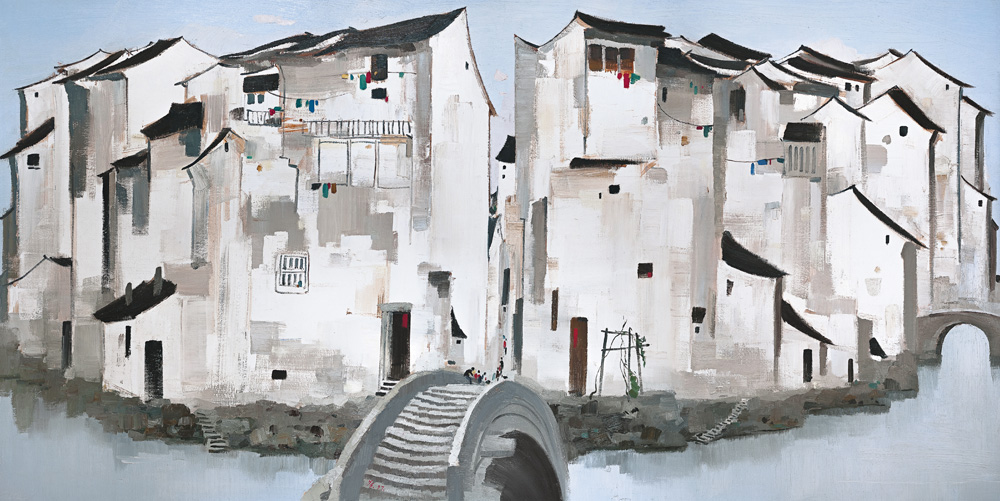Overseas museum contributes to popularizing Chinese art

This oil painting The Zhou Village is the masterpiece of Wu Guanzhong, who was a world-known modern Chinese painter and started his career at the Museum of the Asian Arts of Paris. The museum has the wisdom and far-sightedness to promote Chinese artists like Wu to the world.
On Monday, April 4, 2016, The Zhou Village, an oil painting by master artist Wu Guanzhong, sold for HK$236 million ($30.4 million) at the Poly Auction’s spring sale. The piece set a new auction record for Wu’s artwork, and indeed for contemporary Chinese oil paintings. The next day, on April 5, Peach Blossom Spring, a huge ink-and-color work of master painter Zhang Daqian (1899-1983), fetched HK$270 million ($34.8 million) in the salesroom of Sotheby’s major spring auction.
The two artists are both great figures in art circles and markets in China. One common thing between them is that they both began their glorious careers at the Museum of the Asian Arts of Paris, also known as the Cernuschi Museum.
There are two models in which a Western museum holds Asian arts. In England and America, usually major museums have sections to exhibit Asian collections, while in Europe, separate museums are often set up for Asian arts.
In Paris, the Cernuschi Museum and the Guimet Museum are two museums dedicated to Asian arts. While the latter covers a wider range of Asian arts, the first one focuses on Chinese collections.
Founded in 1898, the Cernuschi Museum not only exhibits ancient Chinese cultural relics but also collects and exhibits modern Asian artwork.
The museum is far-sighted in discovering Chinese artists. As early as 1946, before Zhao Wuji, also known as Zao Wou-Ki, became popular, the museum held an exhibition for his works using a whole exhibition room, which was his first exhibition overseas. The same year, the museum also held an exhibition for Zhang Daqian AKA Chang Dai-chien, his first exhibition in Europe. The exhibition strongly boosted Zhang’s standing in the Western world. Later on, some of the important works of the two artists were donated to the museum by the artist himself or their family members.
The museum is far-sighted in regard to Oriental arts, but is careful in introducing artists. It only exhibits high-level Asian art and never holds commercial exhibitions. In the past 30 years, the museum has seldom held exhibitions for a single artist. Instead, it holds themed exhibitions that review art history. For example, it has held exhibitions on Angkor Wat archaeological findings, statues of Buddha in the Northern Qi Dynasty (550-577), cultural relics from the Sanxingdui Archeological Site, and paintings of the Ming and Qing dynasties.
How does this museum have the wisdom and far-sightedness to promote Chinese artists to the world? In 2015, Christine Shimizu, then director of the museum said: “The Cernuschi Museum pays attention to showing the continuity of traditional Chinese paintings and their changes under the influence of the West. It also introduces new trends of Asian arts.” “Our presentation of the process behind Chinese arts from ancient paintings to modern and contemporary arts exhibits the inheritance of traditional thoughts and arts by new generations of artists, rather than simply imitation. We always examine painting works in the history of arts.”

 PRINT
PRINT CLOSE
CLOSE